Buy HD e-Books & Text —— www.ccelian.com
the Art of Nao
Scrolls: 1 . 2a . 2b . 3 . 4 . 5 . 6 . 7 . 8 . 9 . 10 . 11 . 12 . 13 . 14 . 15 . 16 . 17 .
18 . 19 . 20 . 21 . 22 . 23 . 24 . 25 . 26 . 27 . 28 . 29 . 30 . 31 . 32 . 33 . 34 .
< Scroll 16 ____________________________________________________ Scroll 18 >
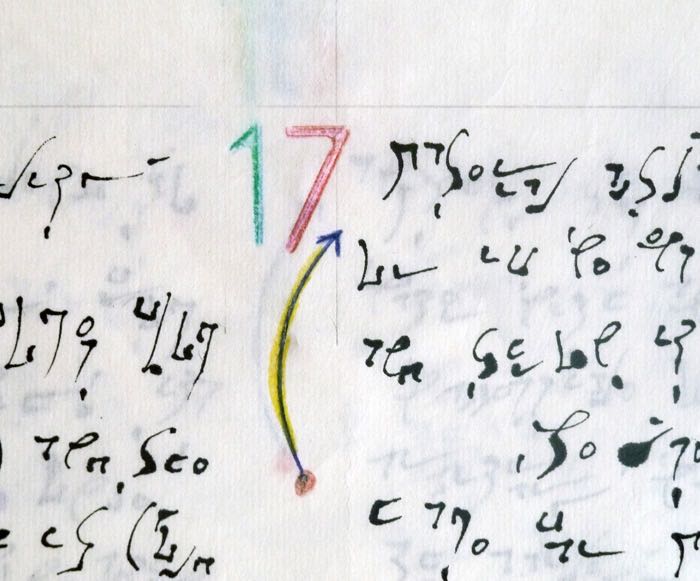
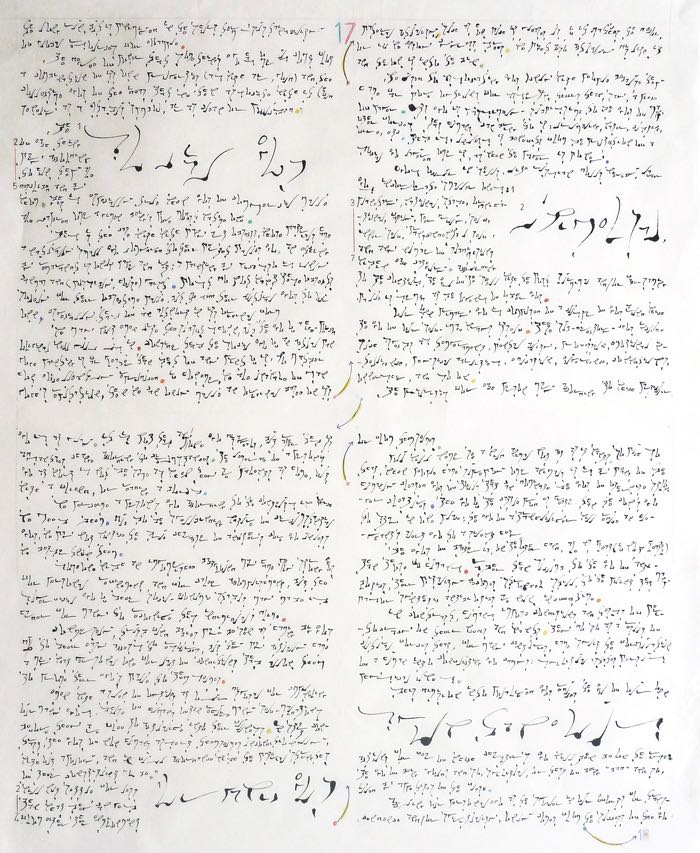
68.5 x 83.5 cm ~ 27 x 33 inches
_________________
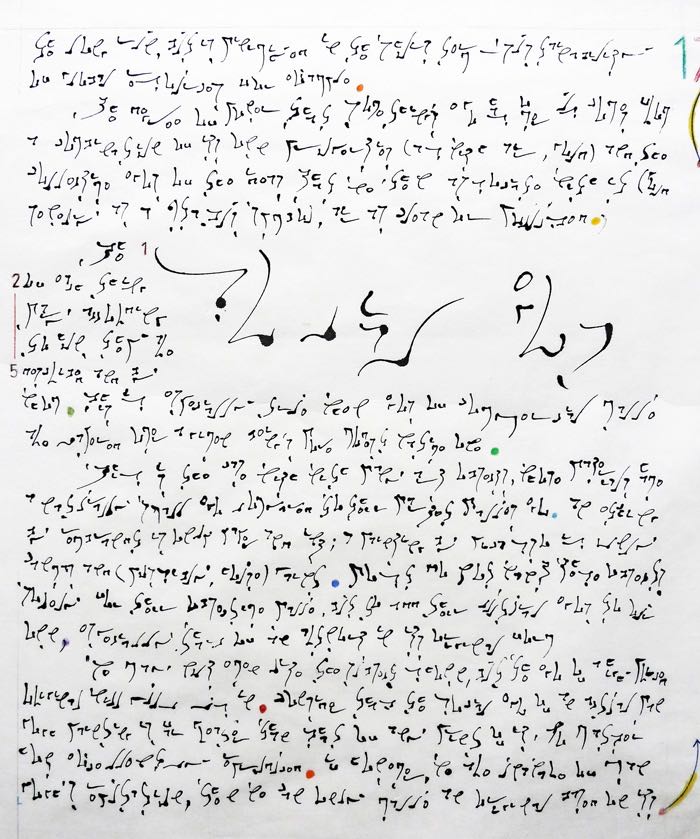
Scroll 17-section 1
> the long run, but is minimized in the short term—sustainability of global resources, for example.
The degree of power that something’s ego has over us comes from a combination of its own properties (as with air, gold) and the collective egos of the ideas that we then associate with it (gold jewelry as a status symbol, air as clean or polluted.)
The social egos of each thing vary according to how they are described, and by whom. This is especially true when egos of commercial value are layered over a given being’s more modest native ego.
This is the case with many art objects, whose materials have a naturally small ego compared to that of their market value’s ego. An etching by Rembrandt is only paper and ink; a painting by Picasso is only canvas and (possibly, house) paint. Most do not want these objects solely for their objective value, but to add their cultural egos to our own, especially that of an art work in its original form.
We may not even like the subject shown, but the ego of a high-priced original will pull us in. Consider, that the social ego of an actual Van Gogh painting is far greater than that of any print of it, no matter how excellently reproduced. If however, we are unaware of Van Gogh’s reputation, then we can only value an original based on its >
______________
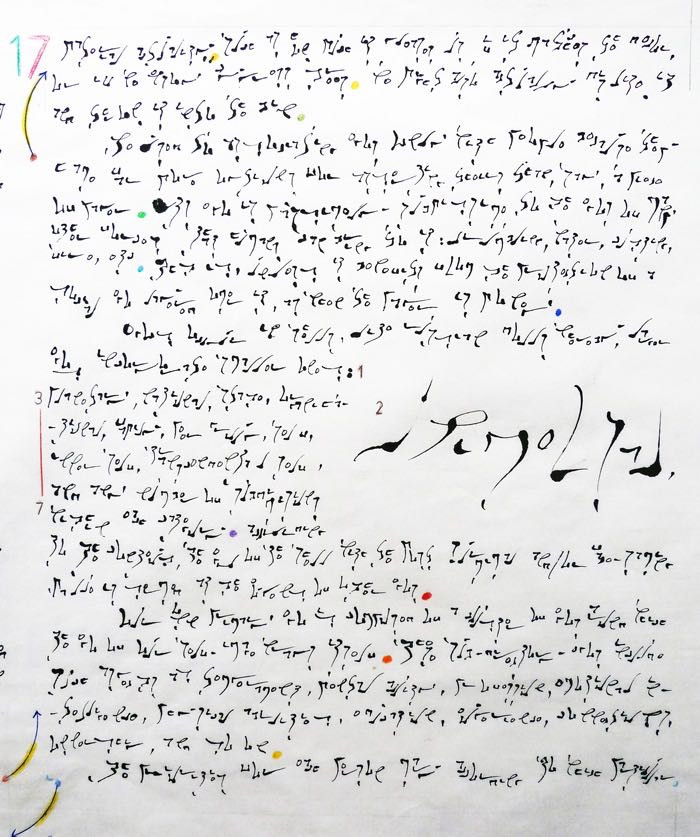
Scroll 17-section 2
> material actuality, such as how much it pleases us, if it matches the decor, or if we enjoy cypress trees. We might also actually dislike it and throw it into the bin.
We’re used to associating egos only with people because they have far more options for asserting theirs than, say, a piece of paper. Its ego is passively submissive to the egos of many other forces that humans can bring to it: crumbling, water, cutting, fire, etc. That is, unless it benefits from the protection of a social ego layered over it, as when the paper is money.
Egos occur in shells like Russian dolls whereby, larger egos incorporate smaller ones: universal, planetary, national, state, organizational, family, peer group, self, inner self, transcendental self, and any number of subdivisions within each category. According to the context, the ego of the shell with the most survival and/or face-saving value is served at the expense of other egos.
Our own primary ego is composed of a cluster of egos around which the ego of our self-image wraps itself. These sub-directory egos include such aspects as temperament, mental acuity, profession, emotional intelligence, physical abilities, education, experience, connections, ownership, and so on.
The priorities for each person vary according to which particular >
_______________

Scroll 17-section 3.1
> ego is at play. It is not that any one ego disappears, but rather that its advantages change according to circumstances. The leverage of a person’s ego at work is not the same as when they are parents at home, out with a friend, or reading a book.
We perceive a person’s ego according to the contexts in which we meet them. Due to the spellbinding nature of circumstantial egos, we may not notice the true character of another’s core ego unless we better know them.
Someone with an impoverished background may have very strong egos for personal refinement and for career accomplishment, but the superficial ego of their socio-economic status may make it harder for many to recognize this individual’s drive.
__________________

Scroll 17-section 3.2
Conversely, trust-fund babies may be seen as having big egos due to their easy access to resources, but they may actually have a very weak personal one for lack of conditions that allow them to prove their ego’s characters to themselves.
Even with a slew of options at our disposal for empowering our many egos, those of humans often require many self-validations before they are free to actualize into their fullness. In stark contrast, the egos of non-humans assert themselves unconditionally, without apology, and in full accordance with the material strengths of their constituent "I be." Organic egos will not settle for less than what they can get from either their environment >
_______________

Scroll 17-section 4.1
> or from themselves.
You will never see a wild animal not act as it wants. So much so that, when people have supremacy over animals it is by means of the humanly created egos of tools that can dominate the egos of otherwise stronger creatures. The ego of the cattle prod is greater than the cows’ ego to stay in one place; the ego of a tranquilizer will reduce an elephant’s alert ego to a silent heap.
The egos of bacteria, on the other hand, are as great (if not greater) than those of humans. Rather than succumb to the ego of antibiotics, their vitality becomes stronger still, to the point that many major synthetic antibiotics are now ineffective.
In contrast, humans impose conditions and tests of meritocracy on their needs and wants.
________________
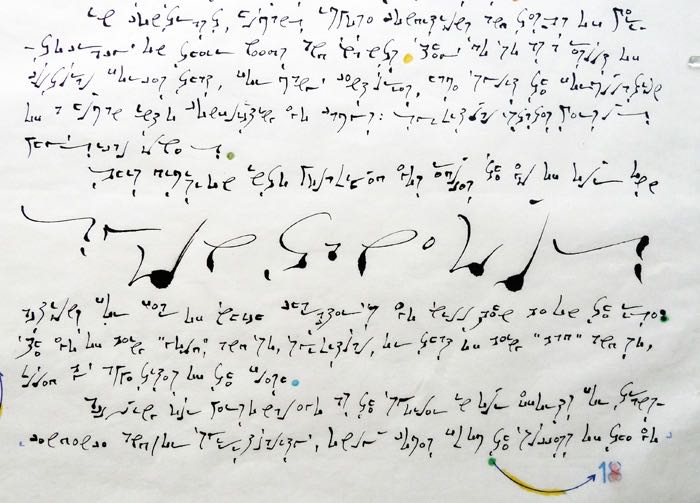
Scroll 17-section 4.2 — End of Scroll 17
They do so as a result of cultural forces that, for many centuries, have split the formulation of a human into conflicting ego camps: spiritual states versus physical ones.
This division into polarized egos reduces the ego of our own spontaneous actions for fear of which character’s ego will then be on the rise: the ego of being “good,” and so spiritual, or that of being “bad” and so, ruled by appetites of the flesh.
Accusing our personal ego as the spoiler in our efforts for transcendence &/or spirituality, only comes from the success of the ego >
< Scroll 16 ____________________________________________________ Scroll 18 >
Scrolls: 1 . 2a . 2b . 3 . 4 . 5 . 6 . 7 . 8 . 9 . 10 . 11 . 12 . 13 . 14 . 15 . 16 . 17 .
18 . 19 . 20 . 21 . 22 . 23 . 24 . 25 . 26 . 27 . 28 . 29 . 30 . 31 . 32 . 33 . 34 .
Buy HD e-Books & Text —— www.ccelian.com
© C.C. Elian 2010 - 2016